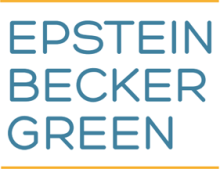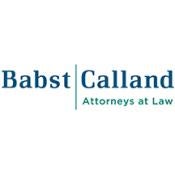On October 24, 2016 the Food and Drug Administration (“FDA”) in conjunction with the Centers for Medicare & Medicaid Services (“CMS”) announced their intention to extend the Parallel Review pilot program indefinitely. The Parallel Review process is intended to provide timely feedback on clinical data requirements from FDA and CMS, and minimize the time required for receiving Medicare coverage nationally. Sounds good. So, why have so few manufacturers taken advantage of the program to date?
Despite its admirable goals, the current Parallel Review Process is too limited in scope and involves significant risks for manufacturers.
The standard process for obtaining Medicare coverage involves a sequential review. First, the device manufacturer must obtain approval, 510(k) clearance, or a de novo classification by the FDA. After FDA approval, clearance, or de novo classification has been received, the manufacturer would seek coverage of the device or procedure using the device from CMS. The manufacturer has the option of pursuing a National Coverage Determination (“NCD”) from CMS or a local coverage determination (“LCD”) from one or more of the Medicare Administrative Contractors (“MACs”).
In contrast, under the Parallel Review program, FDA and CMS simultaneously review manufacturer’s clinical trial design and data. Parallel Review is broken down into two stages: (1) the pivotal clinical trial design development stage, and (2) the concurrent evidentiary review stage. This two stage process is designed to allow manufacturers to minimize the likelihood of having to conduct additional trial(s) at a later date to meet CMS’s coverage requirements and shorten the overall timeline by having the agencies review the evidence simultaneously. Although the goal is right, there are some disadvantages.
First, the Parallel Review program is limited to devices that are subject to pre-market approval or de novo classification. This is only a small portion of the market today. To put this in context, for every 140 510(k)s cleared by the FDA, one PMA is approved. In 2014, for example, there were 3203 510(k) clearances compared to only 42 PMAs and 28 de novo classifications. This means that the vast majority of devices will not be eligible for Parallel Review.
The more significant limitation is that the program requires the manufacturer to pursue a NCD. Deciding whether to pursue a NCD or LCD is a significant strategic consideration for any manufacturer. Requiring that manufacturers apply for a NCD in the Parallel Review process creates a high degree of risk that manufacturers – and their investors – may not be willing to take. As manufacturers are painfully aware, if CMS issues an unfavorable NCD, Medicare coverage is not available anywhere in the US. Because NCDs apply nationally to all MACs, the LCD option is foreclosed by an unfavorable NCD. Manufacturers can appeal, of course. But reopening an adverse NCD requires a significant amount of new data that may take years to compile through new clinical trials and there is no guarantee that a reopening will be granted or a favorable NCD will be published. As a result, the lack of a choice between NCDs and LCDs can be a powerful deterrent to the Parallel Review program.
This risk is compounded by the fact that manufacturers are not allowed to drop out of the NCD process after the NCD tracking sheet has been publicly posted by CMS. Although the program is designed to provide early feedback, it is not unusual for CMS to have additional comments throughout the NCD process. Under the current Parallel Review process, manufacturers would be required to pursue NCDs even if they later received new information that made the NCD pathway less desirable.
It is also unclear if the program is appropriately resourced. The Parallel Review Pilot Program was limited to no more than five candidates per year. If the Agencies are serious about accelerating the path to market and payment for even this subcategory of devices, they need to allow more devices into the program and ensure that it is appropriately staffed to adequately address the needs of the participants.
While the Parallel Review program has its challenges, it is a step in the right direction. It just does not go far enough. In order to have a more predictable and streamlined path to market, manufacturers need clear guidance on coverage criteria that can be leveraged nationally or locally. Moreover, this guidance should apply to any device that required clinical evidence for coverage, regardless of whether the device is subject to a PMA, de novo or 510(k) clearance.
By focusing on broad based improvements to the coverage determination process, the Agencies would be able to provide patients with access to more devices more quickly using less Agency resources. If, for example, the time frame for the NCD and LCD process could be reduced by 20 days on average by providing more transparent guidance, and if you could apply that to half of the products that received approval, de novo classification, or clearance in 2014, that would save over 32,000 days of review time. Admittedly, that is spread out over time and among manufacturers but the impact is not insubstantial.
FDA’s expansion of its program to include the opportunity to get feedback from private payors is also a positive development for manufacturers. While it is still too early to know the impact of this program, commercial payors are another key piece of any manufacturer’s commercial strategy and must be considered early.
The decision to make the Parallel Review Program permanent no doubt reflects a commitment by FDA and CMS to working with manufacturers to help bring new devices to market in a faster and more efficient way. However, opportunities remain to improve the program to expedite the process in a way that benefits industry – and patients – more broadly.




 i
i


